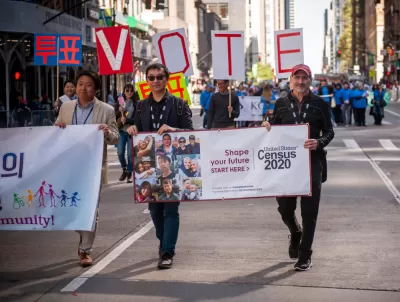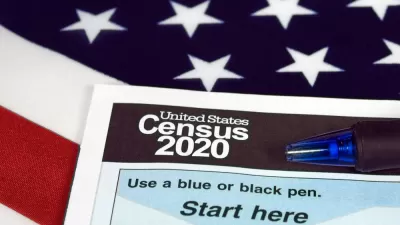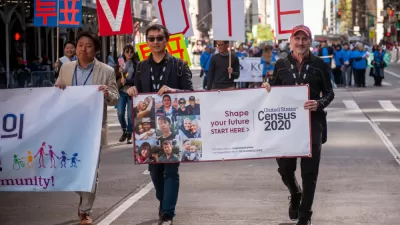Media claimed that Census data showed a sharp decline in America's white population, but the widely publicized figure reflects a misunderstanding of new data collection techniques.

When the Census Bureau released the results of its 2020 survey, many media outlets highlighted one figure: the supposed decrease in the white population by 8.6 percent. But according to an article by Morris Levy, Richard Alba, and Dowell Myers, that number is "an illusion."
The apparent decline in the white population is a result of changes to the Census Bureau’s protocol for measuring and classifying racial identity. The changes aimed to more accurately gauge the expansion of the country’s mixed-race population through new and more sophisticated data collection and classification techniques that capture the nuances of Americans’ multifaceted racial and ethnic identities.
The authors point out that the erroneous figure can be attributed to the larger percentage of people that were reclassified as non-white, rather than a dramatic change in demographics. "In short, the confusion over white decline occurred not because the population changed but because the nuances in many individuals’ plural identities became more visible in the 2020 census." This, they argue, "is a positive development."
The authors go on to make several suggestions for how the Census Bureau can prevent similar misunderstandings of the data, including making more ethnicity data available to the public and creating more refined mechanisms for reporting mixed backgrounds.
FULL STORY: The Truth About White America

Alabama: Trump Terminates Settlements for Black Communities Harmed By Raw Sewage
Trump deemed the landmark civil rights agreement “illegal DEI and environmental justice policy.”

Study: Maui’s Plan to Convert Vacation Rentals to Long-Term Housing Could Cause Nearly $1 Billion Economic Loss
The plan would reduce visitor accommodation by 25% resulting in 1,900 jobs lost.

Planetizen Federal Action Tracker
A weekly monitor of how Trump’s orders and actions are impacting planners and planning in America.

Waymo Gets Permission to Map SF’s Market Street
If allowed to operate on the traffic-restricted street, Waymo’s autonomous taxis would have a leg up over ride-hailing competitors — and counter the city’s efforts to grow bike and pedestrian on the thoroughfare.

Parklet Symposium Highlights the Success of Shared Spaces
Parklets got a boost during the Covid-19 pandemic, when the concept was translated to outdoor dining programs that offered restaurants a lifeline during the shutdown.

Federal Homelessness Agency Places Entire Staff on Leave
The U.S. Interagency Council on Homelessness is the only federal agency dedicated to preventing and ending homelessness.
Urban Design for Planners 1: Software Tools
This six-course series explores essential urban design concepts using open source software and equips planners with the tools they need to participate fully in the urban design process.
Planning for Universal Design
Learn the tools for implementing Universal Design in planning regulations.
Caltrans
Smith Gee Studio
Institute for Housing and Urban Development Studies (IHS)
City of Grandview
Harvard GSD Executive Education
Toledo-Lucas County Plan Commissions
Salt Lake City
NYU Wagner Graduate School of Public Service





























